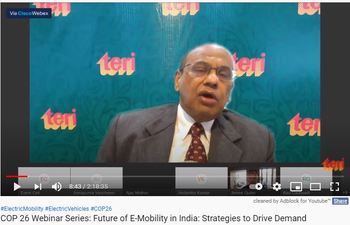The Use of E-Moped Increases Commute Satisfaction and Subjective Well-Being: Evidence From Shanghai, China
Publication Year: 2022
Author(s): Sun S, Yao Y, Xu L, He X, Duan Z
Abstract:
A healthy, effective, and sustainable society benefits from raising commuter satisfaction and subjective well-being. In this respect, transport mode choice is commonly recognized as one of the key factors associated with commute satisfaction and commuters' subjective well-being. However, few studies have investigated how e-moped, one of the most popular commute transport modes in China, shapes residents' commute satisfaction and subjective well-being, although e-moped ownership in China is extremely great. The authors conducted an empirical study on the impact of commuting by e-mopeds, using survey data from eight residential communities in Shanghai. A path analysis model was established to investigate the relationships between commute characteristics (including commute distance, commute time, commute costs, transport mode choice, transport environment), socio-demographics, commute satisfaction, and subjective well-being. The model results showed that commute satisfaction positively correlated with commuters’ subjective well-being. However, the relationship between transport mode choice and commute satisfaction was demonstrated not straightforward but fully mediated by commute time and commute costs which both showed a negative impact on commute satisfaction. In this case, using active modes was revealed to lead to a happier work commute than using private cars, whereas bus riders were at the bottom of the list as expected. Surprisingly, the use of e-mopeds resulted in the second highest total effects on the increase of commute satisfaction and subjective well-being due to less commute time and lower commute costs. Additionally, the impacts of e-moped substitution were studied. The findings showed that commuters who take buses had the greatest potential to switch to e-mopeds, however, it was difficult to allow e-moped users to switch to other commuter transportation modes. Given this situation, it made sense to support the growth of e-mopeds in Shanghai, and this study provided specific suggestions for doing so.
Source of Publication: Transport Policy
Vol/Issue: 117: 60 - 73p.
DOI No.: 10.1016/j.tranpol.2022.01.010
Country: China
Publisher/Organisation: Elsevier Ltd.
Rights: Elsevier Ltd.
URL:
https://www.sciencedirect.com/science/article/abs/pii/S0967070X22000166
Theme: Vehicle Technology | Subtheme: Electric vehicles
Related Documents
Opinions/Videos

COP 26 Webinar Series: Future of E-Mobility in India: Strategies to Drive Demand
Published Year: 2020
Abstract:
Due to the COVID19 lockdown, one of the most visible impacts has been on the mobility sector,... Read More
Case Study
E- Rickshaw Operational and Deployment Strategy – Case of Kakinada
Published Year: 2017
Abstract:
This report, ‘E Rickshaw deployment plan and report: Kakinada’, i... Read More
Opinions/Videos
Why Electric Vehicles Are Going To Take Over The World
Published Year: 2020
Abstract:
Interesting times in the electric vehicle market, as more and more carmakers try to position t... Read More



